Note: this post was written in August 2017 during my trip to Europe.
I had planned to do at least one day trip while staying in London. The issue was that there were so many interesting places to choose from. I eventually settled on Milton Keynes as I could visit Bletchley Park at the same time and placate my inner history nerd.
The city was built as a masterplanned project in the 1960s as one of the ‘New Towns’ . This was a program designed to accommodate the rapid growth in Greater London. Its modernist design and reuse of the Garden City concept makes it a fascinating place to visit if you are at all interested in urban planning.
First impressions
I caught a West Midlands train from Euston Station to get to Milton Keynes. As it was a counter-peak service, the carriages were relatively empty.
Milton Keynes Station is quite a large and imposing complex. It has a massive open plaza out the front which leads to an old bus station and the first of many pedestrian underpasses which I was to encounter.
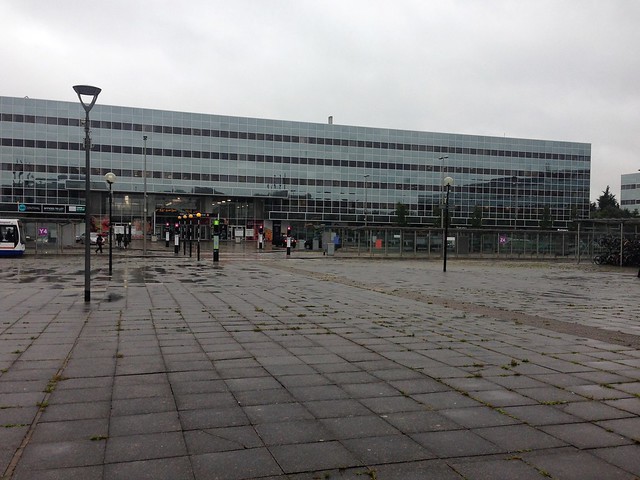
Even though it was raining and a working day, the entire area was desolate. I spent a good hour or so wandering around on a vague heading towards the massive Central Milton Keynes Shopping Centre buildings seeing hardly any people or activity at all.
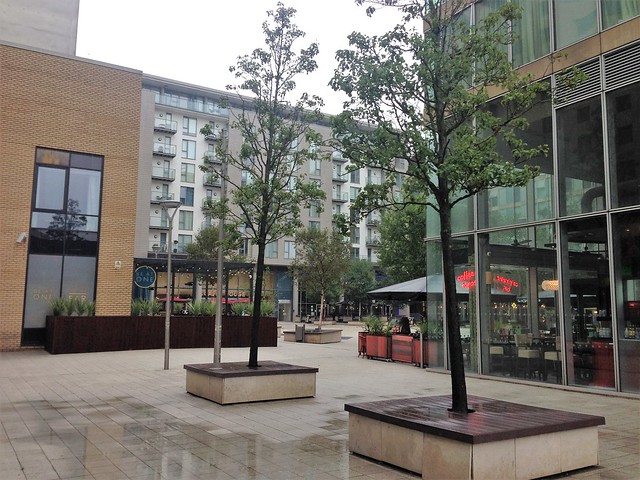
It was pretty eerie walking through places that were open and contained all the facilities that anyone could need but without any people in them. Everyone was either driving or not to be seen at all.
As I was to also discover later in Bletchley, the main shopping centre in Milton Keynes had sucked the life out of pretty much any other retail activity in the wider area. Other buildings with shopping areas were either exhibitions of ‘For Lease’ signs or filled with nail salons. massage parlours and discount stores.
The only place with any decent pedestrian activity was the main shopping centre. It comprises two connected buildings: ‘thecentre:mk’ and ‘intu Milton Keynes’. Both were busy and full of active trade.
There was even an outdoor market in the carpark, trying to replicate a scene that the shopping centre has largely destroyed.
On a local history mission
After a surprisingly good and cheap lunch of roast chicken and coleslaw at Marks & Spencer, I continued my full circuit of both shopping centre buildings.
As 2017 was the 50th anniversary of Milton Keyne’s modern development, the shopping centre had thoughtfully put up a display in one of the main corridors. This consisted of a series of plans and architectual drawings from the Milton Keynes Development Corporation showing what the city was supposed to look like.
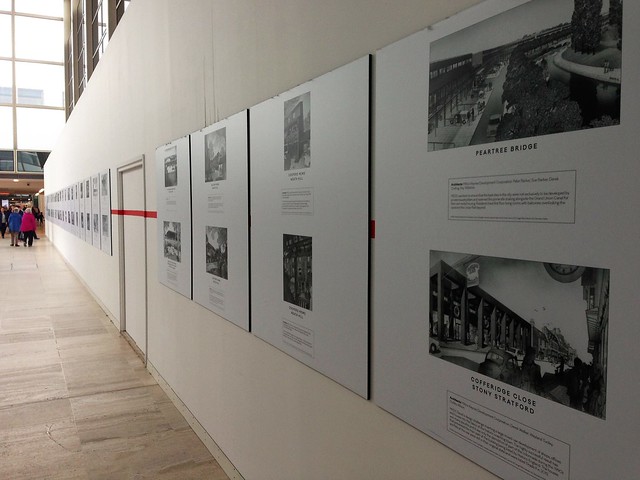
I decided to pick one of the scenes at random and try to find it in the city. The idea was to take a photo from the same place and perspective as the artist’s impression was done.
The location that I ended up choosing was Coopers Mews in Neath Hill. There wasn’t any particular reason for this one other than it looked like a typical suburban scene for an artist’s impression in a new development.
Once I had worked out where to go, I set out on my mission.
On my way to Coopers Mews I was able to walk through the famous maze of fully segregated shared pedestrian/cyclist paths and enjoy the scenery. It is an pretty incredible network, even if it is poorly-utilised and not in terribly good condition.

It was also fascinating to see the architecture along the way. No matter where you looked, there were modernist vibes.

There were smaller hints of Milton Keynes’ past scattered in other places too. I found this plaque indicating the location of gas and water services underground dates from when the central area of the city was first laid out.
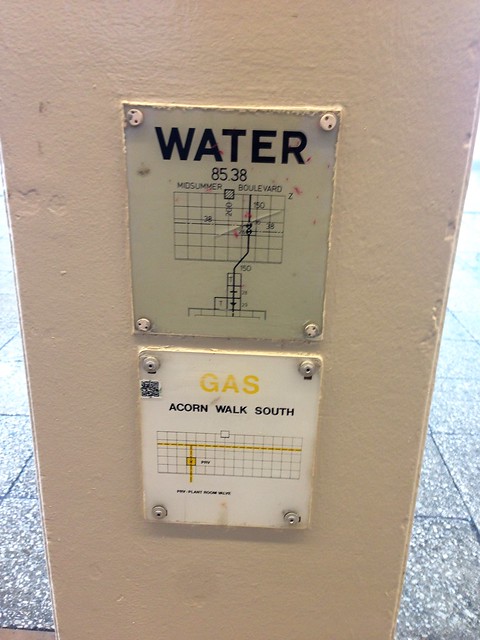
After an hour or two of walking, I arrived at Coopers Mews. As artist’s impressions go, the reality wasn’t too far away from what the city’s planners and architects envisaged over 50 years ago. Some things are noticeably different from the picture, such as the number of bins, the absence of people and the overgrowth of plants.

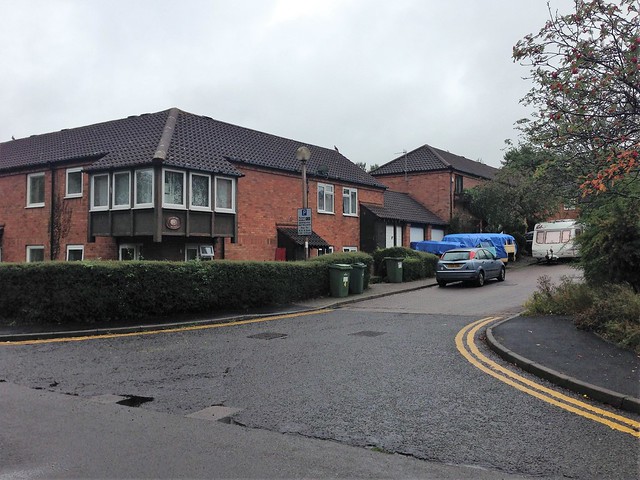
The rest of my day was dedicated to visiting Bletchley and Bletchley Park. Luckily there was a bus stop located on a nearby main road where I was able to catch one of two buses heading in that direction.
After asking a passing bus driver and staring at the stop map for several minutes, I eventually worked out how to get there. This wasn’t helped by the fact that the stop shelter had been removed and it had started raining again.
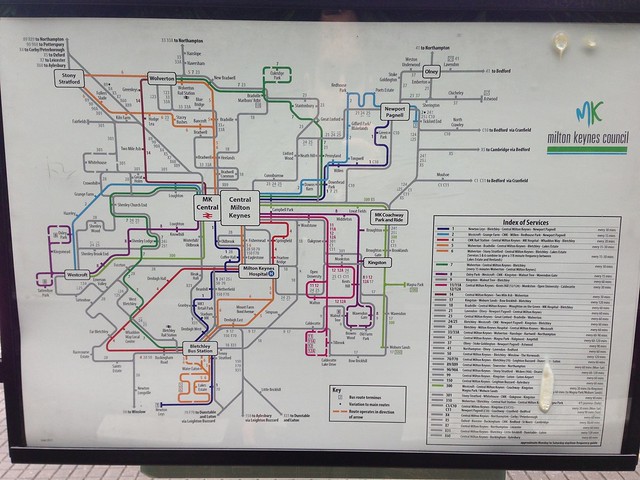
Thoughts
Having heard a lot about Milton Keynes through my planning degree and other people, it was very worthwhile to visit. The city has its flaws but is also a living historical example of an important stage in the development of modern urban planning. If you are ever in the area, I would highly recommend taking a look.




Leave a Reply